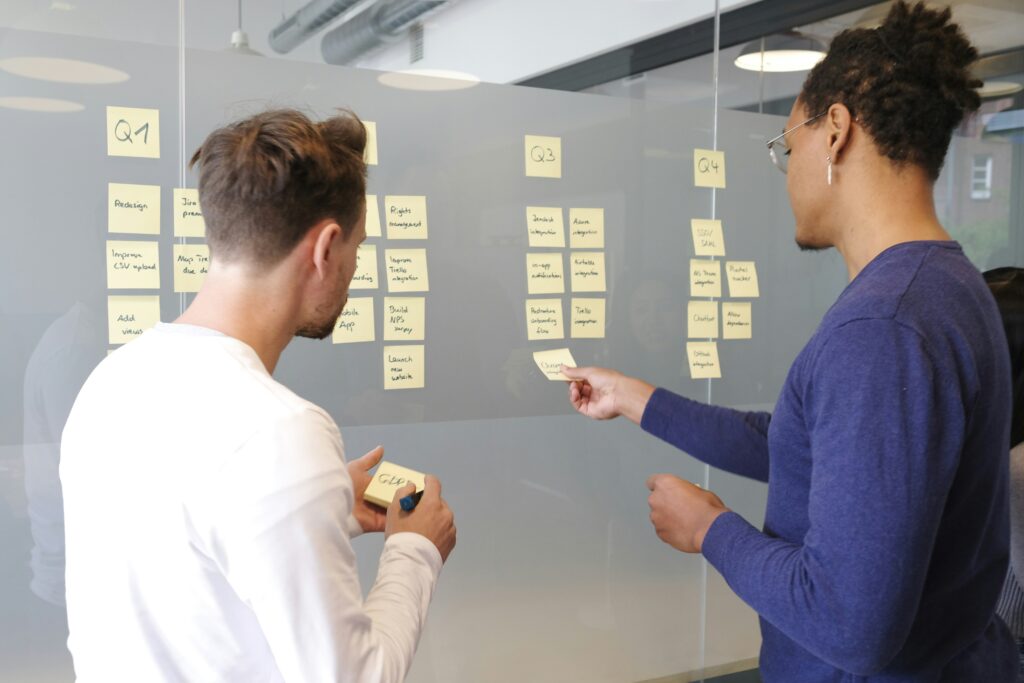
When it comes to middle management training, most professionals focus on skills and tactics. However, as we’ve explored in previous discussions, developing new managers into high-performance leaders requires more than just technical know-how. Effective leadership is about achieving results through people, rather than relying solely on individual effort. One of the most essential skills for successful management is the art of delegation.
Why Effective Delegation Matters

Delegation isn’t just about assigning tasks—it’s about building trust, fostering collaboration, and empowering employees to take ownership of their work. By mastering the delegation process, early and mid-career managers, as well as executives, can develop teams that are not only efficient but also highly engaged and self-sufficient.
Let’s explore three common approaches to delegation and why a collaborative delegating strategy is the key to boosting productivity, morale, and overall organizational success.
Three Approaches to Delegation

1. Command and Control Delegation
The command and control approach is the most traditional method of delegation. In this scenario, a manager assigns tasks with clear, rigid instructions on how they should be completed. While this can ensure short-term efficiency, it often stifles creativity and prevents employees from developing critical problem-solving and leadership skills.
This method can work in structured environments—such as when teaching a new employee a standardized process—but it limits long-term growth. Without opportunities to think independently, employees become overly reliant on management, reducing overall team agility.
2. The Pitfalls of “Empowerment” Lip-Service
A common but ineffective delegation style is what we call “empowerment lip-service.” This happens when a manager tells an employee they have full control over a project but fails to provide real trust and autonomy. Instead, the manager micromanages the process, constantly checking in, requesting updates, and even taking back control if the results don’t align perfectly with expectations.
The result? Employees feel frustrated, undervalued, and demotivated. Rather than fostering a sense of ownership, this approach can breed resentment and disengagement.
3. Collaborative Delegating: The Key to Leadership Development
Collaborative delegating is the most effective and sustainable delegation strategy. This approach emphasizes clear communication, mutual trust, and employee development. Instead of merely assigning a task, the manager initiates a conversation with the employee, ensuring alignment on goals, expectations, and success metrics.
Key components of collaborative delegation include:
- Empowering employees by trusting them to complete tasks in their own way.
- Encouraging problem-solving by allowing them to navigate challenges independently.
- Providing support and feedback without micromanaging.
- Maintaining open lines of communication to foster ongoing collaboration and alignment.
This method not only enhances team performance but also develops employees into future leaders, strengthening the overall organization.
A Practical Example

When I moved from Disney to Fox in 2001, I quickly realized what little I knew about how things operated at my new company. The systems, workflows, and account structures were all unfamiliar, presenting a stark contrast to the deep internal knowledge I had developed during my time at Disney. Having essentially grown up in the Disney environment, I was accustomed to a certain way of working—one that felt intuitive and second nature. At Fox, however, I found myself in uncharted territory, facing the challenge of adapting to a completely different organizational structure and way of doing business.
In this situation, I instinctively considered two possible initial approaches. I could immerse myself in every detail, attempting to master Fox’s inner workings, or worse, I could impose Disney’s processes and philosophies onto Fox. However, I quickly recognized that neither of these paths would be effective.
Instead, I viewed this transition as an opportunity to lead differently. Rather than micromanaging or dictating processes, I focused on visionary leadership, engaging my team to shape the best way forward. I encouraged them to bring their expertise, creativity, and institutional knowledge to the table, allowing them to determine the most efficient and innovative ways to achieve our goals.
This leadership approach proved to be invaluable. By trusting my team and giving them ownership over the process, I was able to step back from the minutiae and focus on providing strategic guidance to the organization. Rather than getting bogged down in operational details, I could take a broader view, ensuring that our work aligned with the company’s long-term objectives. Ultimately, this shift not only empowered my team but also allowed me to drive meaningful change within the organization, fostering a culture of collaboration, innovation, and shared success.
How to Foster Independence and Growth Through Delegation

Engage in Meaningful Dialogue Instead of Providing Instant Answers
When an employee faces a challenge, resist the urge to immediately provide a solution. Instead, encourage critical thinking by asking questions like:
- “What options have you considered?”
- “How are you approaching this challenge?”
- “If [a key variable] were different, how would you adjust your strategy?”
By guiding employees through this thought process, you help them develop confidence, decision-making skills, and self-sufficiency, reducing their dependence on managerial oversight.
Establish a Clear Communication and Alignment Process
As employees gain confidence and independence, maintaining alignment on goals and expectations remains crucial. To ensure a seamless workflow, establish an agreed-upon communication strategy, such as:
- Regular check-ins (weekly or bi-weekly meetings to discuss progress and challenges)
- Project tracking tools (using platforms like Asana, Trello, or Monday)
- Feedback loops (creating an open-door policy for support and mentorship)
By implementing these systems, you empower employees to take initiative while staying aligned with broader organizational objectives.
Elevate Your Leadership with Collaborative Delegation

Mastering the art of delegation is a game-changer for managers striving to build high-performance teams. By shifting from command and control or empowerment lip-service to collaborative delegation, you create an environment where employees feel trusted, engaged, and motivated.
Are you ready to take your leadership skills to the next level? Start incorporating these delegation strategies today and watch your team—and your organization—thrive.
For more insights on leadership development, team management, and workplace productivity, explore our latest resources and training programs.




